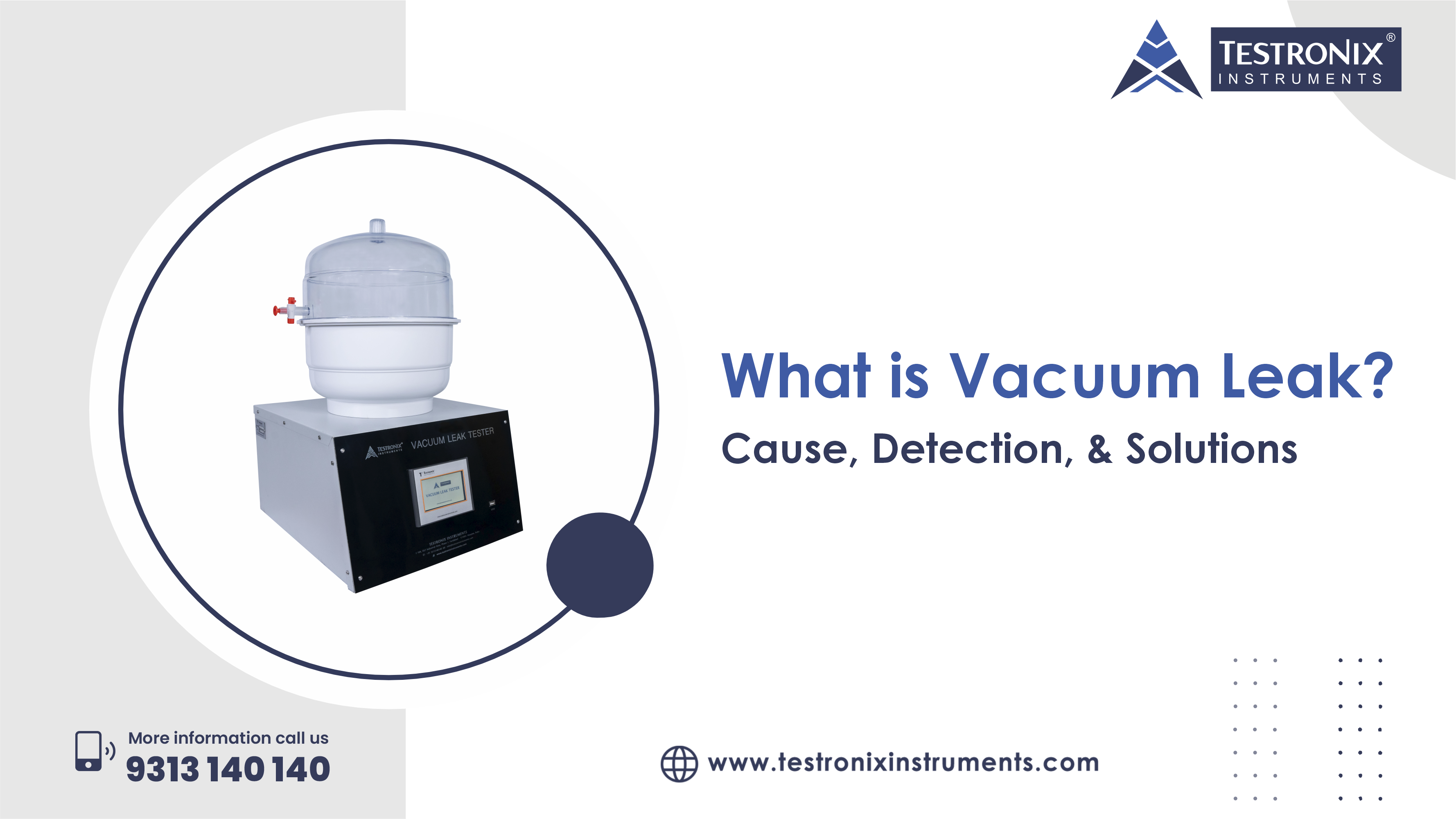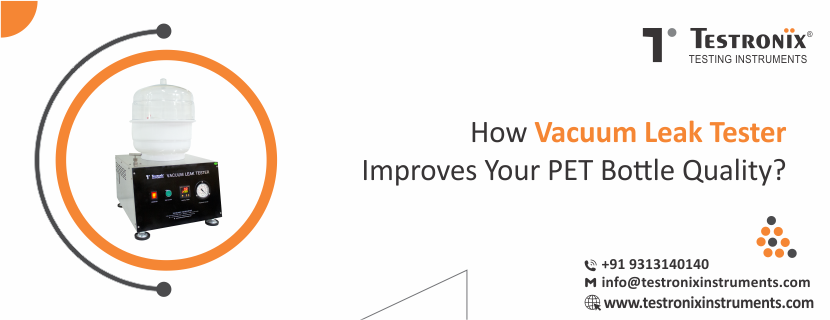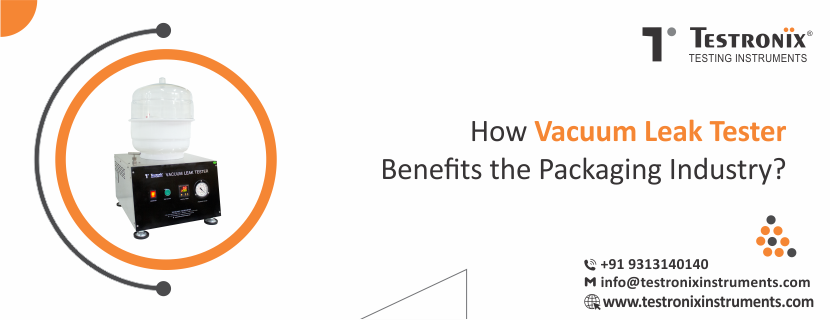Vacuum systems play a critical role across various industries, including automotive, packaging, electronics, and laboratory testing, where they create and maintain controlled low-pressure environments for a multitude of applications. A vacuum leak occurs when unwanted air or gas infiltrates a vacuum system, disrupting its pressure equilibrium and overall functionality.
Even a minor leak can significantly compromise system efficiency, leading to product defects, reduced equipment lifespan, and increased operational costs. It is essential to comprehend the nature of vacuum leaks, their potential causes, and effective detection and prevention methods to ensure the reliability and safety of these systems.
What is Vacuum Leak?
A vacuum leak is an unwanted escape or entry of air into a vacuum system, causing a loss of pressure and reduced efficiency. This disrupts the pressure balance that the system relies on to function properly. Vacuum leaks can lead to reduced performance, inefficiency, or even system failure, depending on the application. They may be caused by damaged hoses, loose fittings, cracked seals, or worn components. Detecting and repairing vacuum leaks is essential for maintaining the integrity and performance of any system that depends on controlled pressure environments.
Common Vacuum Leak Issues
Vacuum Leak is an important part of the packaging process in order to provide product quality and safety. The vacuum leakage issues in packaging can result in several problems, such as incorrect seals, contamination, and even product failure. The following are the most common vacuum leak issues –
Vacuum Leak issue in Packaging
Vacuum leak issues in packaging typically arise from inadequate sealing, damage to the packaging material, or malfunctioning vacuum pumps. Inconsistent heat sealing can create tiny openings that allow air to enter, which can significantly shorten the shelf life of products and jeopardize their safety.
Punctures, tears, or minute holes in the packaging films also cause leakage. Low-quality or worn-out gaskets, loose couplings, or misadjusted machine settings may also cause vacuum loss. Periodic inspection, good maintenance, and top-notch sealing equipment prevent these and guarantee consistent product protection.
Vacuum Leak issue in Vehicles
Typical vacuum leak problems in vehicles happen when air leaks or enters the intake manifold, hoses, or gaskets and interrupts the air-fuel ratio. This can result in stalling, rough idling, poor fuel efficiency, power loss, and a check engine light. Typical causes include loose connections, cracked vacuum hoses, broken intake manifold gaskets, or a defective brake booster. It is important to detect these leaks early on, since long-term vacuum leaks can damage engine performance and cause emissions, leading to expensive repairs if left unaddressed.
Vacuum Leak issue in Machinery
A vacuum leak problem in machinery can result in low system efficiency, overheating, high energy intake, and erratic performance. Some of the causes of this problem are worn-out seals, loose fittings, cracks, or damaged hoses. Early detection of leaks is important to prevent equipment degradation and loss of production time. Careful maintenance, good sealing, and the application of a vacuum leak tester will reveal and repair leaks quickly, making for a trouble-free and efficient running machine.
Reasons for Vacuum Leak
A vacuum leak occurs when air or gas infiltrates a vacuum system, unintentionally disrupting the intended pressure levels and compromising overall performance. In industrial machinery, such leaks can result in reduced efficiency, quality issues in products, and heightened energy consumption.
Damaged seals or Gaskets
Seals and gaskets are employed to form vacuum-tight connections between parts. They may become brittle, cracked, or eroded with time due to heat, pressure, or chemical exposure. Once their elasticity is lost, they no longer prevent air from entering and cause vacuum loss. Seals should be inspected and replaced routinely to prevent this problem.
Loose Connections
Most vacuum systems contain flanges, fittings, and joints for attaching various components. When these are tightened improperly or work loose through vibration, they open up micro gaps for air to enter. A small gap can have a dramatic impact on vacuum level, so proper torque and double-checking during maintenance is important.
Cracked Houses or pipes
Hoses and pipes within a vacuum system operate with continuous changes in pressure. Over time, they will develop cracks, holes, or leaks due to wear and tear if subjected to excessive temperature variations or mechanical stress. A single crack will weaken the performance of the entire system. New hoses and quality materials can avoid frequent breakdowns.
Defective Valves
Valves control the passage of air or gas in a vacuum system. If a valve does not seal properly because of mechanical wear, dirt buildup, or misalignment, it will open a path for air to enter the chamber. Defective valves not only introduce vacuum leaks but can also have an impact on process control, so these should be cleaned and calibrated regularly.
Corrosion or wear of components
Metal components within the vacuum system, including chambers, connectors, and pumps, can rust with time, particularly when exposed to moisture or corrosives. Rusting may cause pinholes or rough textures that allow air to leak. Generally, normal wear due to friction or motion can also harm parts. The use of corrosion-resistant materials and protective coatings can add to the life expectancy of these materials.
How to Detect Vacuum Leak in a System
It is essential to detect a vacuum leak to keep the system efficient and damage-free. A small leak can impact performance and lead to extra energy usage. The following are ways you can detect the leaks with some of the most popular methods:
Visual Inspection
The initial leak detection step is a good visual inspection of the system. Check for any visible signs of wear, including cracked hoses, loose fittings, damaged gaskets, or oil residue around joints and connections. Visual inspection is fast and inexpensive, and thus perfect for detecting big or easily visible leaks early.
Listening for Hissing Sounds
A vacuum line leak tends to create a characteristic hissing or whistling sound as air enters the vacuum system. By shutting off nearby equipment to minimize background noise, technicians can listen very closely in the vicinity of hoses, seals, and connections to determine the location of the leak. It is a quick and easy first-line detection technique.
The Smoke Test
A smoke test requires that a visible, non-toxic smoke be injected into the vacuum system when it's pressurized. When a leak is present, the smoke will find its way out of the system via the leak point and can be readily seen. It's particularly effective when the leaks are minute or when the leak points are difficult to observe.
Spray Test
In this technique, a soapy water mixture or a leak-sensing spray is used on suspect areas like fittings, joints, and hoses. If there is a leak, bubbles will emanate where air is leaking out. This technique is inexpensive and an effective means to identify small leaks precisely.
Utilizing Professional Diagnostic Equipment
In the case of complicated systems, sophisticated diagnostic equipment such as electronic leak detectors, ultrasonic leak detectors, or vacuum gauges is employed. Such equipment can identify tiny leaks that are not audible or visible. The right tools give proper readings and play an important role in serious industrial or laboratory situations where accuracy cannot be compromised.
The Solutions for Vacuum Leak: How to Fix it?
Vacuum Leak lowers system efficiency, impacts performance, and can harm delicate equipment if left untreated. Repairing a vacuum leak involves a methodical process: locating the leak, repairing it, and verifying that the system retains the specified vacuum pressure. Reliable repair and avoiding future downtime are guaranteed by proper repair.
Locate the Location of the Leak
The initial task is to identify the source of the leak accurately. This can be achieved with visual inspection, listening for the sound of hissing, smoke testing, or spray testing. Such accurate detection can be achieved using professional equipment such as ultrasonic detectors or helium leak detectors, particularly in complicated systems. Correct identification prevents the unnecessary replacement of components and minimizes repair time.
Repair the Leak at the Source
Once the leak has been identified, it must be fixed at its source. Depending on the cause, this could involve replacing damaged seals or gaskets, tightening loose fittings, replacing cracked pipes and hoses, or servicing valves. Addressing the problem at its root ensures long-term system reliability rather than offering only temporary, makeshift solutions.
Employ Specialist Leak Detection
In industrial or critical usage, specialized leak detection equipment such as vacuum leak testers, ultrasonic detectors, or sophisticated vacuum analyzers can accurately locate leaks and allow for proper repair. Such equipment is necessary for high-accuracy systems where tiny leaks can have huge repercussions.
Test and Verify the Fix
After the repair, it is essential to check the system to confirm that the leak has been completely eliminated. This can be done through pressure decay tests, vacuum gauge checks, or by retaking the smoke or spray test. These methods help ensure that the system maintains the correct vacuum pressure, preventing future issues and ensuring the quality of the repair.
Vacuum Leak Repair Cost
Vacuum leak repair cost varies from ?25,000 to ?1,00,000 depending on the severity of the leak, the type of system involved, and the specific parts that need to be replaced. Minor leaks caused by loose hoses or small cracks may be inexpensive to fix while major leaks involving intake manifolds, gaskets, or complex components can significantly increase the cost. It is important to have the issue diagnosed by a qualified technician to determine the exact cause and get an accurate repair estimate.
To accurately identify and assess vacuum leaks, technicians often use specialized tools from reputed manufacturers like Testronix instruments. These devices help pinpoint the exact location and size of leaks quickly and reliably, making the repair process more efficient and effective. Regular testing with such instruments ensures better maintenance and prevents costly damage in the long run.






